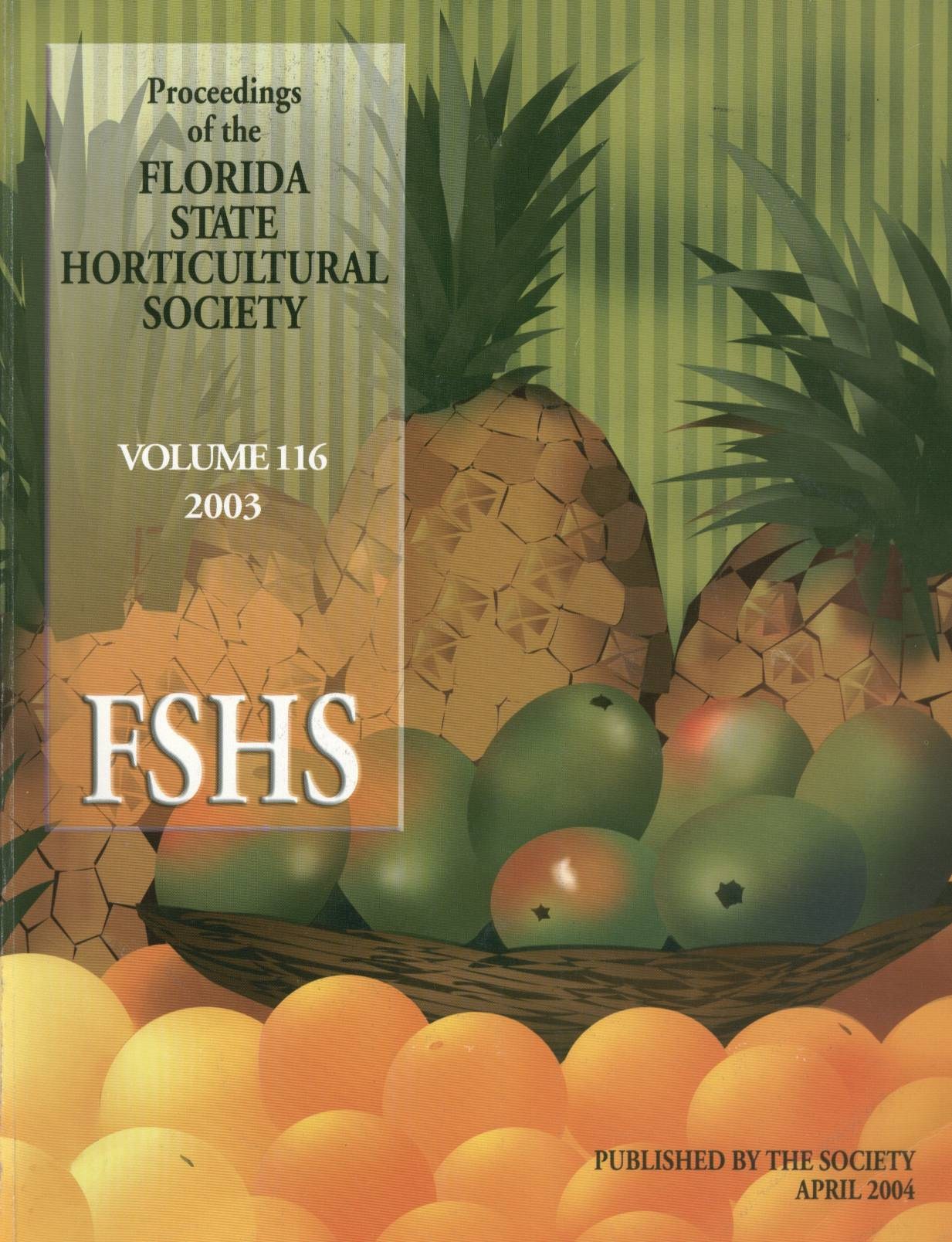Abstract
A field trial of new rootstocks budded with Flame grapefruit was planted in May 2000 at a site affected by Phytophthora nicotianae, Phytophthora palmivora, and Diaprepes abbreviatus (PXD) near Vero Beach, Florida. The trial contained advanced rootstock selections from the USDA breeding program, as well as Swingle, Carrizo, and Cleopatra. Soil in the test area is primarily Winder, and nearby trees are heavily infested by Diaprepes weevil. Trees in the trial were inoculated at the time of planting with diseased roots from nearby trees declining from PXD. Initial growth of trees on some rootstocks was strong, while trees on others were severely stunted. After 18 months, grapefruit trees on Cleopatra and three of the hybrids were significantly larger than trees on Swingle. After 24 months, comparison of soil cores showed a strong correlation between the amount of Phytophthora on the roots and tree size. After 36 months, trees on US-802, US-942, US-897, and Cleopatra were growing strongly, while trees on Swingle and some other rootstocks were small and weak. There are apparent large differences between the tested rootstocks in their ability to tolerate these PXD conditions with grapefruit scion.

